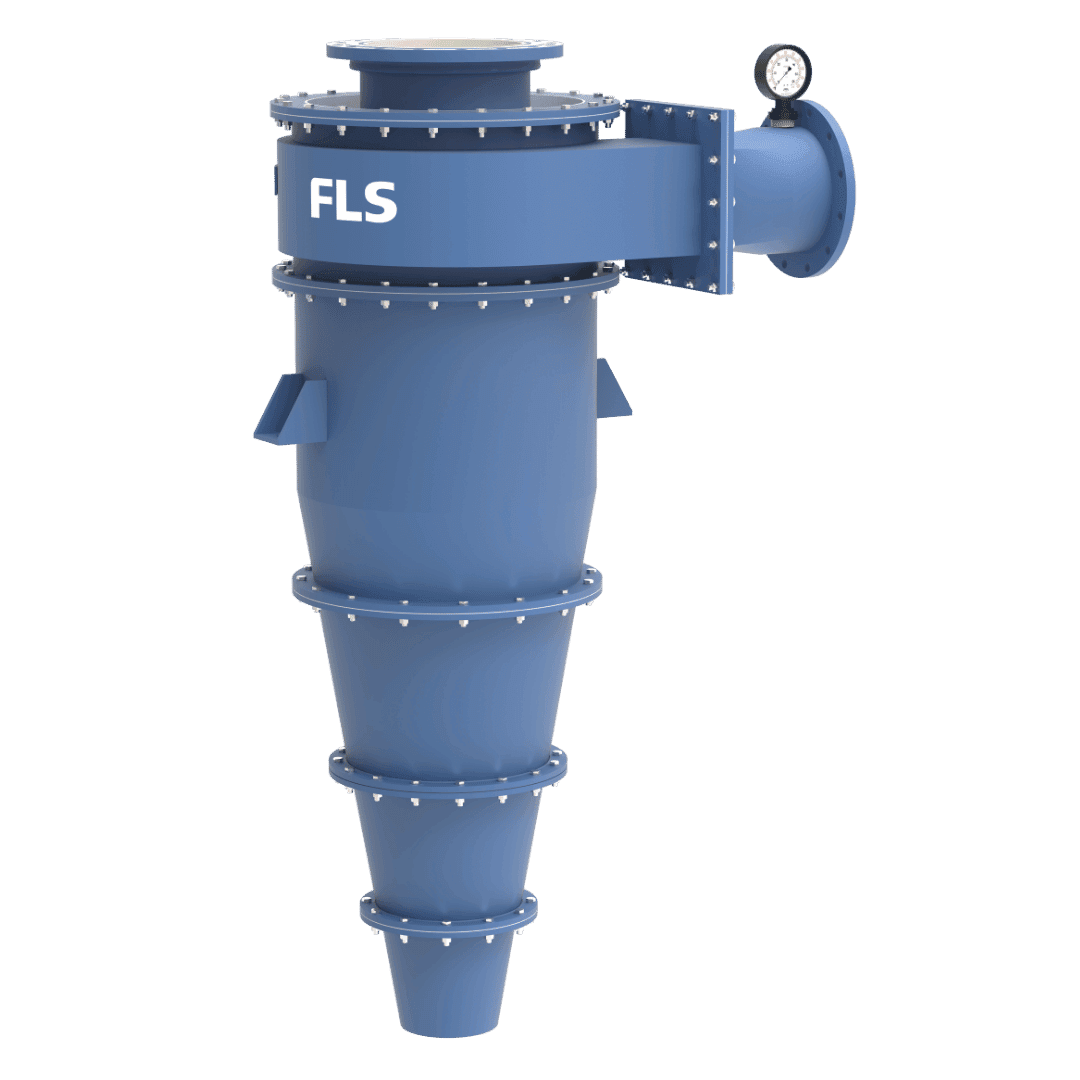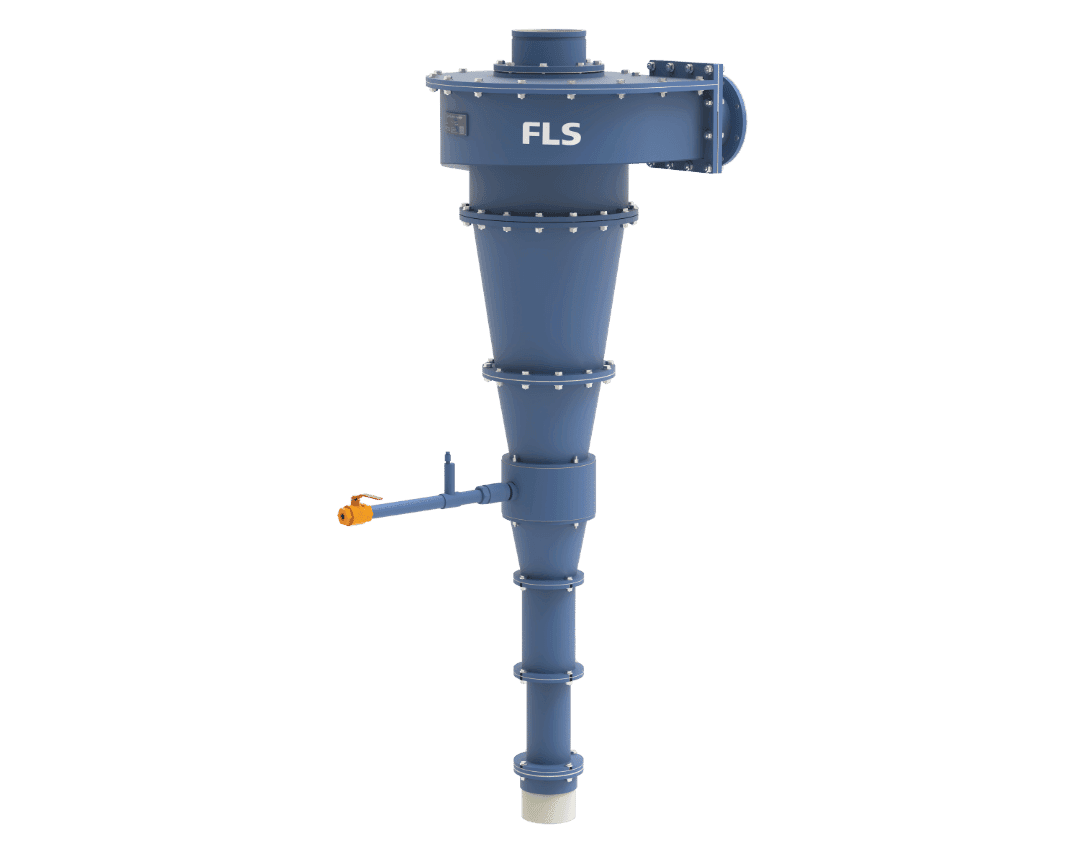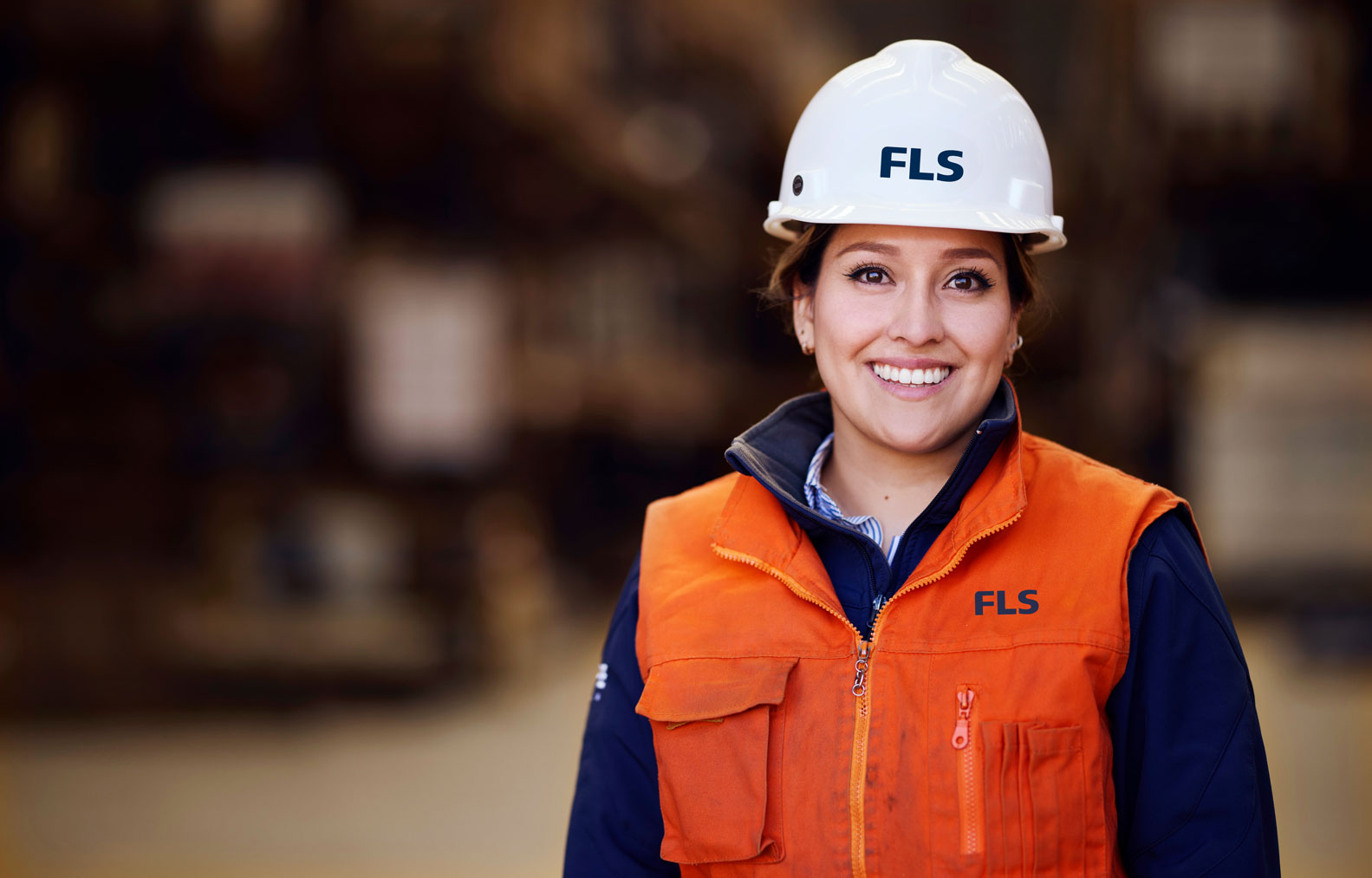Finer, sharper separations at high densities
Our gMAX hydrocyclones feature more sharply angled upper cones followed by longer, angled lower cones. This innovative design maximizes tangential velocity in the upper part of the cyclone and extends residence time in the lower section, resulting in a substantially finer and sharper separation at higher densities, with fewer fines in the underflow and less coarse material in the overflow.


